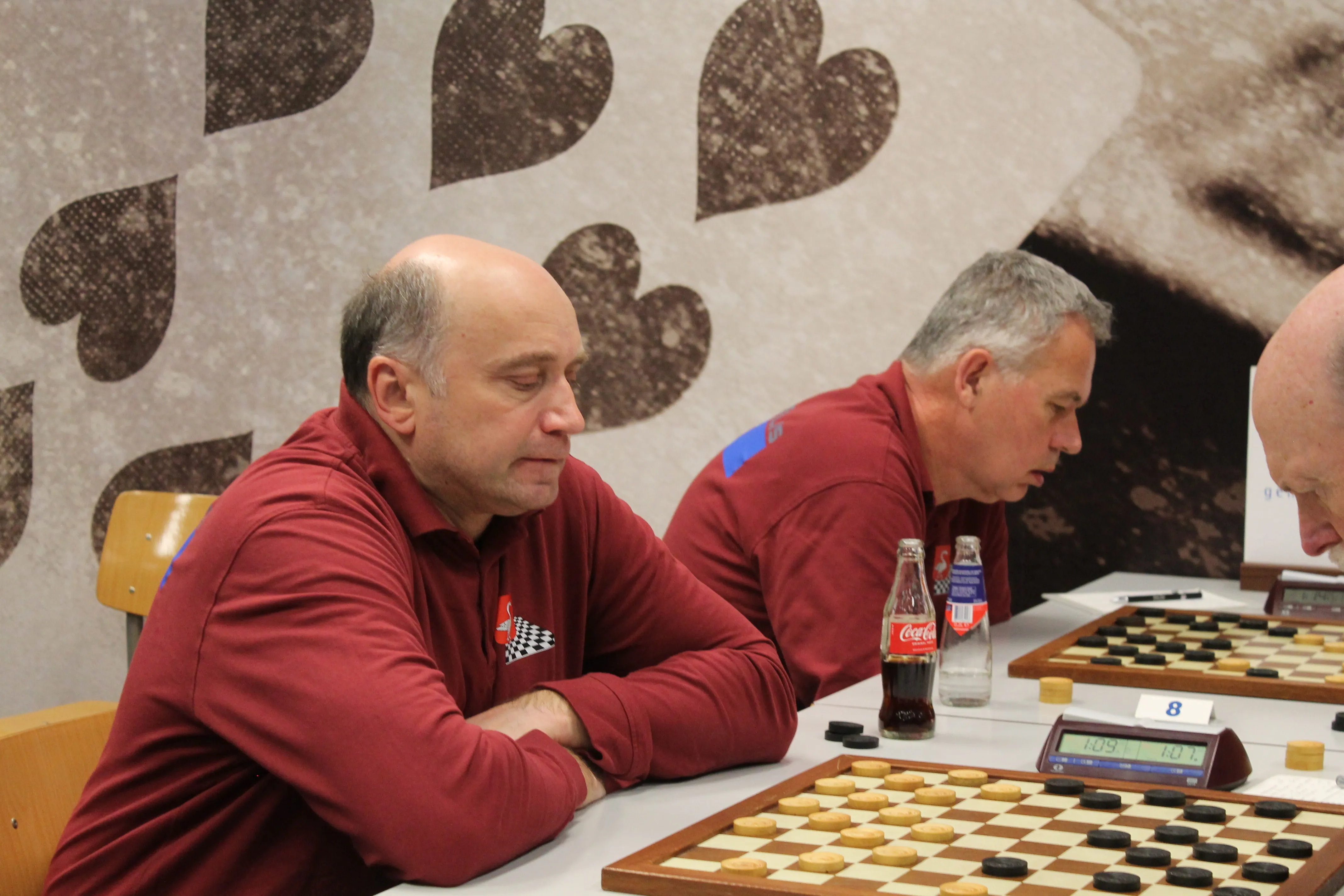There are many ways to analyse a game of draughts. The most common approach is, of course, to work hard, examine which moves were good or bad, what could have been improved, and what the decisive mistake was. Then, present all this clearly and readable for the reader—assuming you think the reader is important. There is nothing wrong with this. On the contrary: if you want to become better and if you want to learn, you simply have to analyse thoroughly and write it down well, because that helps organise your thinking. But there are other ways to look at a draughts game. There are more ways to learn to play draughts better; it doesn't have to be only with deep variants.
In Guntis Valneris versus Oege Dijkstra, for instance, you can see how the Latvian former world champion deals with his opponent's cautious exchange strategy. This requires mental calmness, and you must certainly avoid getting annoyed. So you can learn a lot from that if you find yourself in such a situation. With Valneris-Dijkstra, you can also look at the structures of both players and how they develop throughout the game. The best is if you can bring everything together in a game, but that requires quite a bit:
⦁ You take your opponent into account.
⦁ You pay close attention to your own structure and that of your opponent.
⦁ You also know the different game types.
⦁ You also know what ‘the right technique’ is in certain positions.
⦁ Sometimes you count tempi, sometimes it is not that important.
⦁ Can you transition from one characteristic to another?
⦁ In a position with small number of pieces, you use the method from my draughts books CPP 6 and CPP 7.
⦁ I am probably forgetting a few things.
Combining all these elements in a single game is asking a lot. In practice, it is difficult to balance all these aspects properly. In reality, many players let aspects such as tempi or the exchanges they want to make dominate their decisions. I have used this game by Valneris in many of my training sessions: hopefully, I have an idea of what the average player thinks, and I have tried to incorporate that aspect into this discussion.<br><br>Let it be clear in advance: the reader will not encounter any variants. This is not due to laziness on my part, but I believe that text is much better suited to understand this game properly. Furthermore, I have not spoken with Valneris or Dijkstra (though that would have been a good idea), but I will still attempt to empathize with their considerations, and the reader must decide whether this sounds convincing. Finally, I could have given the reader a kind of "reading guide" as an example: "Replay this game about ten times and first look only at the developments on White's left wing."
One last remark beforehand: VBI Huissen became national champion in this match. Valneris was the eighth player to complete his game, and his victory put Huissen ahead 9-7. My draw against Taeke Kooistra made it 10-8, and Gérard Jansen's draw against Wytze Sytsma led VBI Huissen to win 11-9 against Damcombinatie Fryslân. This also turned out to be Valneris' last game for Huissen, as in the 2024-2025 season he will instead play for the Frisian team. All these elements make it a special game as well.
